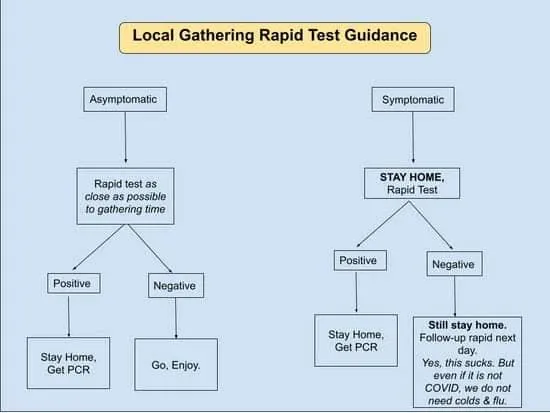
Solid testing chart from Emily Oster. Especially important with Omicron as it seems to have a shorter incubation period (potentially ~3 days versus ~5 days for wild type) than previous variants.
That Norway Omicron Christmas party outbreak is a good example. Most of the guests were fully vaccinated and everyone had tested negative 1-3 days before the event.
Rapid tests have higher false negative rates, but they tend to be pretty good at catching true positives when someone is symptomatic or contagious. So testing day of the event, even right before the event if you can, is the best way to maximize their value. PCR tests will be more sensitive, so have a better chance of catching the infection early, but turnaround times on results might be long given the testing crunch of Omicron.
I want to emphasize rapid tests aren't perfect. They are best used for event screening for contagiousness of asymptomatics. They aren't the best at ruling out an infection. If you are symptomatic please avoid gatherings. Even if it isn't SARS-COV-2, it could very well be Flu or some other virus this time of year.
Note: I think you can safely assume a positive is a true positive with rapid tests. They tend to have low false positive rates just like the PCR tests. But I would follow-up a negative rapid test with PCR or another rapid test if I was symptomatic. And please report your positive at-home rapid tests to your doctor or local health department for surveillance purposes
